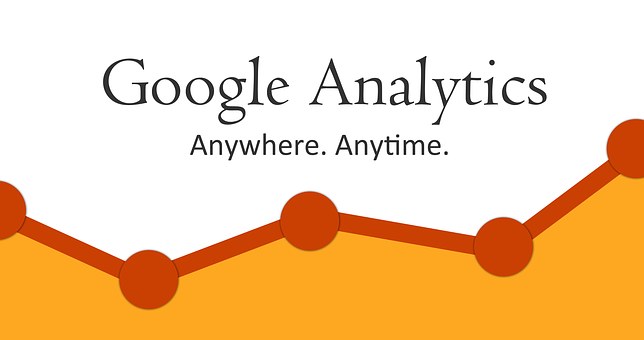By now you are probably aware that the customer journey is fractured among any number of channels and devices. Multi-device and multi-channel journeys take twists and turn as consumers move from one channel to the next and back again, and may start off on one device such as a smartphone, move to a tablet, and then finally head into a store to make a purchase. Any number of scenarios such as this occur whether a consumer is buying a car, searching for a home repair service, or buying a pair of shoes.
Insights are embedded along the customer journey that can give brands a competitive advantage into understanding purchase intent, channel preferences, and which relevant content and messaging will be most apt to encourage consumers to move along the journey. However, gaining a holistic customer view to access these insights continues to be a challenge for brands across industries.
A study by SAP called “Context, Commerce, and Customer: Best Practices to Exceed Expectations,” details the importance of integrating customer data with marketing technology like marketing automation and CRM systems. About 55% of marketers report working on technology systems that extend marketing’s view of the customer to include insights from all impact and interaction points in the customer journey. However, 17% of respondents were not convinced that achieving this integrated view of data was possible at their organizations.
According to the report, “The top points of marketing technology impact are increased measurability and tracking of campaigns and programs (42%), increased engagement across the customer journey (41%), and automated processes and campaigns, connected engagement dots, an accelerated rate of engagement at a lower cost (all at 25%). The top sources for marketing data cited by the research include contact-level data (81%), campaign data (69%), CRM system data (68%), billing/payment data (50%), and sales data (49%).”
Data integration
Most marketers would agree that a single customer view is integral for visibility into the customer journey. The challenge lies in a lack of processes and technology to access the right data. Various data is often stored in multiple systems, such as systems for email, purchase history, service department inquiries, and website engagement. Further compounding this problem is data is often of poor quality – missing key data elements, incorrect and outdated, or contain duplicate records on the same consumer. Data must be consolidated to understand who you are marketing to and the journey your customers go through.
With the huge influx of real-time data, processes must also be implemented to integrate these data sources in real time. A consumer’s behavioral data is often fragmented across website visits, email opens, social interactions, forms completed and purchases, plus much, much more. This data must be unified in real-time around each customer so you can see, understand and act on their behavior. Through a range of system connectors, a marketing cloud-based platform can continuously collect data from around a data ecosystem and consolidate it into a 360-degree single customer view by merging identities from multiple devices into one and dedupe customer records into a consolidated view.
According to a report by LinkedIn and Salesforce, senior-level marketers who have successfully integrated their customer data ranked their effectiveness considerably higher than those who had no integration at all. Sixty-two percent of senior-level marketers said their data was partially integrated, 19% had no integration, and 2% were unsure.

Analytics and insight
Companies need a solution to seamlessly collect and integrate data, as well as a solution to leverage customer analytics and insights to optimize marketing strategies. Research by McKinsey found that journeys are 30-40% more predictive of customer satisfaction and churn and that organizations that analyze the customer journey win in customer experience and growth. By applying analytics across the customer journey, brands can better understand their customers to know where customers are along the journey, what their goals are, and which channels they are using for interactions.
Utilizing customer analysis, segmentation, and visualization, brands can better understand a variety of key points along not only the customer journey but across the entire customer lifecycle. For example, purchase behavior can be analyzed to determine what products and categories are performing well. Analytics can be applied to compare different channels and categories spotting new customer trends and hidden segments. Pivot tables and graphs are highly effective tools for visualizing individual email campaign reports, or VENN diagrams can visually display the customers who have opened each campaign.
Customer journey planning and management
Each phase of the customer lifecycle is unique and presents different challenges and choices. Winning new customers can take time while you build a relationship with them or engaging with lapsing customer before they leave can be difficult to predict. Understanding how consumers make decisions and move through the journey is crucial, and this understanding can only be gleaned when analytics are applied to a foundation of integrated data. Marketers can then focus strategies and resources on the most influential touchpoints to ensure they are prioritizing just the right person, through the right channel and with the right message.

Which technologies are most important in creating a cohesive journey?
Implementing a plan for creating a cohesive customer journey is becoming more important as journeys become more disjointed and fragmented across channels. Marketers are increasingly aware of this and the need to invest in the right technologies. The report by LinkedIn and Salesforce looked at the technologies that both B2B and B2C marketers ranked as highest in importance.


According to the report, “Like B2B marketers, B2C marketers also rated marketing analytics, CRM tools, and content management as highly important to create a cohesive customer journey, but B2B and B2C marketers differed in some technologies of choice. For example, 35% of B2B marketers rated social publishing tools “very effective” in the customer journey vs. 43% of B2C marketers. CRM tools were rated “very effective” by 41% of B2B marketers vs. 36% of B2C marketers.”
Every organization today should be working on building a more customer-centric organization. Consumers are engaging with you according to their preferences – when, where and how they choose. Responding and engaging at each moment of influence along the journey requires an understanding of who your customers and prospects are, the type of engagement and content they are seeking, and providing an exceptional experience. A foundation of data, both internal and internal, must be integrated in real-time for faster decision-making and optimized customer journeys.










![7 data-driven ways to optimize your online store for mobile [Infographic]](https://crayondata.ai/wp-content/uploads/2019/11/optimize-1.jpg)


![Top tips and tricks to improving your customer experience [Infographic]](https://crayondata.ai/wp-content/uploads/2019/01/customer-journey-1.jpg)









